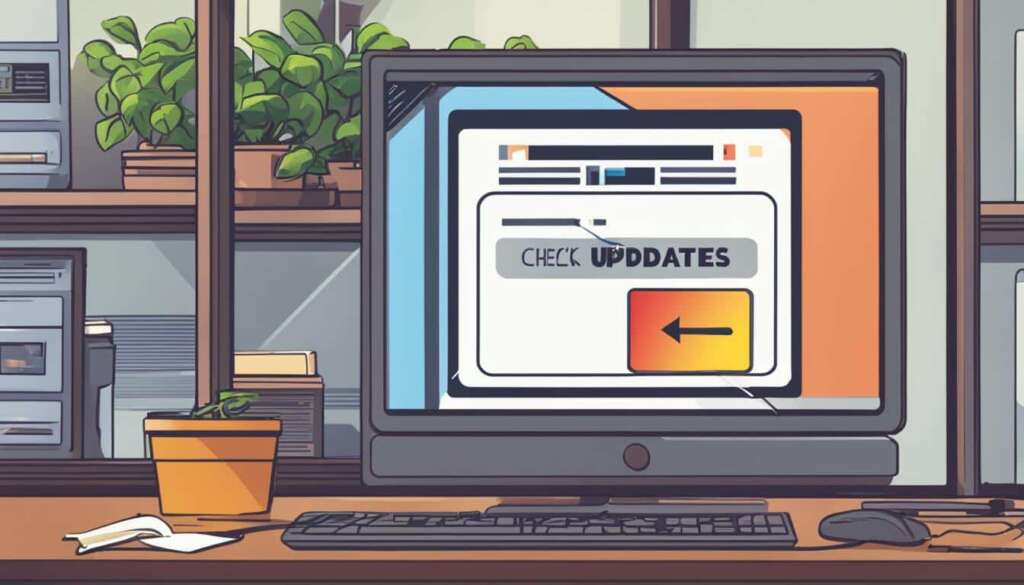Table of Contents
Are you looking to enhance the performance of your PC? Updating your drivers is the key. Whether you’re using a laptop or a desktop, keeping your drivers up to date is essential for optimal performance and security. Not only does it improve system stability and eliminate glitches, but it also allows you to take advantage of advanced hardware components.
So, how can you update your drivers on Windows 10? There are three best ways to do it:
1. Windows Update: Windows Update provides a convenient method to update your drivers. By regularly checking for available updates, you can ensure that you have the latest drivers installed on your system. To update drivers via Windows Update, open the Settings window, select Update & Security, click on Windows Update, and check for available updates.
2. Device Manager: If driver updates are not available through Windows Update, you can manually update drivers via Device Manager. Simply right-click on the Windows Start button and select Device Manager. From there, you can navigate to the specific hardware category, right-click on the device, and select Update driver. This method allows you to manually update drivers on Windows 10 and other versions like Windows 11, 8, 7, or XP.
3. Third-Party Driver Updater Tool: For a more automated approach, you can use a third-party driver updater tool like Advanced Driver Updater. This tool scans your system for outdated drivers and provides a list of the latest updates. You can choose to update individual drivers or update all outdated drivers at once by upgrading to the Pro version.
Updating your drivers on PCs, whether laptops or desktops, brings numerous benefits. It can enhance system performance by up to 50%, ensuring smoother and faster operations. Additionally, it helps to fix compatibility issues, security vulnerabilities, and provides access to new features and functionalities offered by the hardware manufacturers.
Don’t miss out on the benefits of updating your Windows drivers. Follow this step-by-step guide to keep your system running smoothly and efficiently, and say goodbye to performance issues and glitches.
Updating Drivers via Windows Update
Windows Update provides a convenient method for updating drivers on your PC. However, it’s important to note that not all drivers are automatically updated through Windows Update, and there may be delays in receiving the latest driver updates.
To update drivers via Windows Update, follow these steps:
- Open the Settings window by clicking on the Start menu and selecting the Settings gear icon.
- Select “Update & Security”.
- Click on “Windows Update” in the left-hand menu.
- Click on the “Check for updates” button to search for available updates.
If driver updates are available, you can choose to install them by selecting the latest update and following the on-screen instructions. Remember to restart your PC after the driver updates are installed to ensure the changes take effect.
Updating Drivers via Device Manager
If driver updates are not available through Windows Update, you can manually update drivers via Device Manager. Device Manager is a built-in Windows tool that allows you to manage and update hardware drivers on your PC. By following a few simple steps, you can ensure that your drivers are up to date and functioning optimally.
Here is a step-by-step guide on updating drivers via Device Manager:
- Open Device Manager by right-clicking on the Windows Start button and selecting Device Manager. Alternatively, you can press the Windows key + X on your keyboard and choose Device Manager from the menu that appears.
- Once Device Manager is open, you will see a list of hardware categories. Locate the category that contains the driver you want to update.
- Expand the category by clicking on the small arrow next to it. This will display a list of devices within that category.
- Identify the specific hardware that requires a driver update. Right-click on the hardware and select Update driver.
- A new window will appear with two options:
- Search automatically for updated driver software: This option allows Windows to search for the latest driver updates online and install them automatically. If Windows finds a new driver, it will download and install it for you.
- Browse my computer for driver software: This option allows you to manually browse for and install the driver software that you have downloaded from the manufacturer’s website. This is useful if you have already downloaded the driver update.
Using Device Manager to update drivers gives you greater control over the driver update process. It allows you to manually select and install the specific driver you want, ensuring compatibility and stability. Additionally, Device Manager can be used to update drivers on various versions of Windows, including Windows 10, Windows 11, Windows 8, Windows 7, and Windows XP.
Remember to restart your computer after installing the driver to ensure that the changes take effect. Updating your drivers via Device Manager is a straightforward process that can help improve system performance, fix compatibility issues, and resolve hardware problems.
Automatically Updating Drivers using a Third-Party Tool
For those who prefer a more automated approach, using a third-party driver updater tool like Advanced Driver Updater is recommended. This tool scans your system for outdated drivers and provides a list of the latest driver updates. You can then choose to update individual drivers or update all outdated drivers at once by upgrading to the Pro version.
To automatically update drivers using Advanced Driver Updater, download and install the tool, launch it, start the scan, select the driver you want to update, and click on the Update driver button. After the driver is updated, restart your system to enjoy an enhanced PC performance.
Automatically updating drivers not only saves time and effort but also ensures that you have the latest drivers installed for your hardware components. By using Advanced Driver Updater, you can keep your drivers up to date and take advantage of the latest features, performance improvements, and bug fixes provided by hardware manufacturers.
FAQ
How important is it to update drivers on my PC?
Updating drivers is essential for maintaining the optimal performance and security of your PC. By updating your drivers, you can boost your system performance by 50%, ensure a stable and glitch-free system, and take advantage of advanced hardware components.
What are the three best ways to update drivers on Windows 10?
The three best ways to update drivers on Windows 10 are through Windows Update, via Device Manager, or using a third-party driver updater tool like Advanced Driver Updater.
How do I update drivers via Windows Update?
To update drivers via Windows Update, open the Settings window, select Update & Security, click on Windows Update, and check for available updates. If driver updates are available, you can choose to install them by selecting the latest update and following the on-screen instructions.
What should I do if driver updates are not available through Windows Update?
If driver updates are not available through Windows Update, you can manually update drivers via Device Manager. Open Device Manager by right-clicking on the Windows Start button and selecting Device Manager. From there, expand the category of the driver you want to update, right-click on the specific hardware, and select Update driver. Browse to the location where you have saved the updated driver file and follow the on-screen instructions to install the driver.
How can I automatically update drivers using a third-party tool?
To automatically update drivers using a third-party driver updater tool like Advanced Driver Updater, download and install the tool, launch it, start the scan, select the driver you want to update, and click on the Update driver button. After the driver is updated, restart your system to enjoy an enhanced PC performance.







